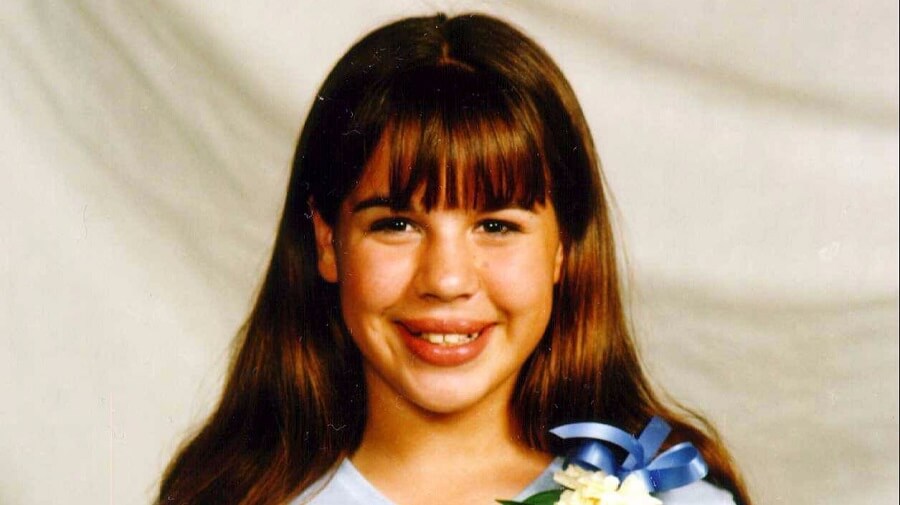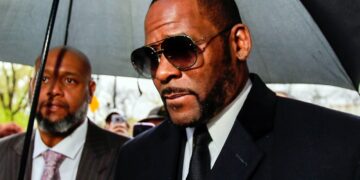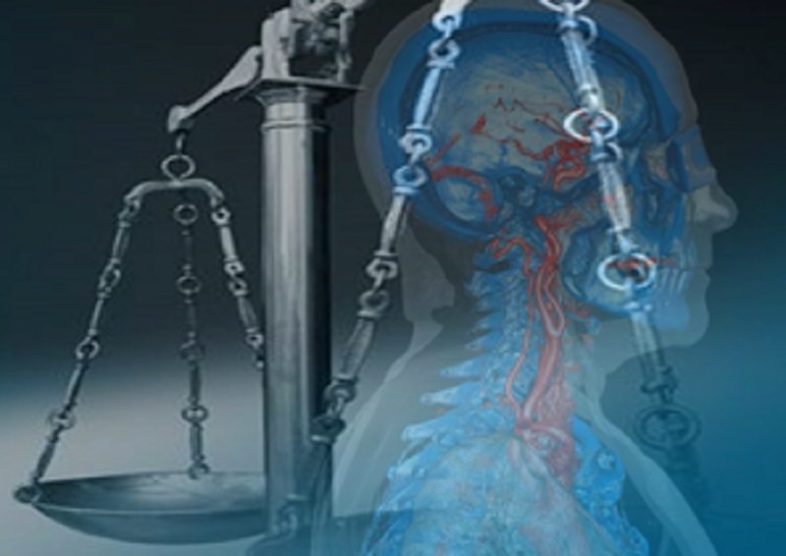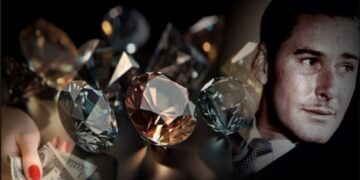Stephanie Crowe was just 12 years old when she was brutally murdered inside her own bedroom at her family home in Escondido, California. On the evening of 21 January 1998, Stephanie was stabbed multiple times before being discovered by her horrified family the next morning. Within weeks, Stephanie’s 14-year-old brother Michael and his two friends, 14-year-old Joshua Treadway and 15-year-old Aaron Hauser were arrested for her murder. But this is far from where this story ends. All of these boys were entirely innocent of this crime and the real killer of Stephanie Crowe is yet to be brought to justice.
I have read and researched countless true crime cases. Many involved children, murder, false confession, and wrongful conviction, but very few have disturbed me to the extent of the Stephanie Crowe case.
Society has faith in justice. Just tell the truth. If you have done nothing wrong, you have nothing to fear. In this case, from the moment police questioned Michael, Joshua, and Aaron in their own homes in the first instance, the parents of these boys did just that. They encouraged their sons to cooperate with the police and help with the investigation in any way they could. This faith and trust however was deeply betrayed.
The parents of Michael Crowe had just lost their daughter to murder. Their grief and pain at what had happened to their child had now been multiplied, escalating to a level that is impossible to fully understand. Their 14-year-old son was being accused of stabbing their 12-year-old daughter to death.

Donald E. McInnis is a California criminal defense attorney. In a career spanning four decades, he has sat at both the prosecution and defense tables giving him extensive insight into both sides of the law. McInnis became the defense attorney for Aaron Hauser as the criminal proceedings against all three boys moved forward.
She’s So Cold is an eye-opening, shocking, and fascinating insight into the inner workings of a complex case, that sent three innocent young boys to criminal court for murder.
McInnis details the suspicion and arrest of the boys, the hearings that took place, the exchanges in court, the witnesses, and the evidence put forward. He also details the fight to prove their innocence.
The police had the theory that these boys had killed Stephanie Crowe. The description of what they believed is illustrated by McInnis:
“The portraits the police had so persistently painted of their three “killer” kids: Here was Aaron, the brain. He was studious, unemotional, with the kind of intellect storytellers give mad scientists and murderers. Then there was Michael; he was smart too, but buried deep within him was this evil monster that takes over the boy’s psyche and turns the good Michael into the evil Michael. Joshua, the artistic type, the gullible one of the trio; he simply goes along with the murder because he’s told to by the others.”
Donald E. McInnis

All they needed was a confession and they were determined to get it. Once in police custody, the boys were deprived of sleep and food. They had no legal counsel. They were denied having any contact with their parents. In fact, initially, their parents weren’t even told their sons were being questioned. The boys were told physical evidence at the scene proved they were the killers. Lie upon lie in efforts to obtain a confession.
Stephanie’s brother was told he had two sides to him, a ‘good’ side and an ‘evil’ side. It was the evil side that killed his sister they told him. It’s just the good side doesn’t remember it. Throughout Michael’s repeated denials, he was pressured and coerced into telling the police what they wanted to hear. The treatment of those three boys by trained adult police officers amounted to psychological torture.
Michael Crowe eventually wrote in a letter that he did not remember harming his sister in any way, but if he did he was sorry. This, the police took as a full confession to her murder. Joshua Treadway, subjected to the same treatment from police gave a false confession that implicated all three boys in a plan to murder Stephanie Crowe.
A psychologist watched these interrogations and didn’t intervene. He didn’t warn the police their behavior was overstepping the mark. In fact, he said Michael Crowe was “a Charlie Manson with a high IQ, a sociopath.” An innocent 14-year-old boy who had done absolutely nothing wrong.
“This case should send a chill down the spine of every American parent, because the terrifying fact remains: this could happen to anyone. What if it was your child?” – Donald E. McInnis
In his writing, Don McInnis takes you on a journey from the beginning of this case to its end 14 years later. It is a factual and well-written detailed account of this complex case and one that showcases the true extent of what happened and the devastation caused to these three boys and their families.
As the defense attorney for Aaron Hauser, McInnis had full access to the inner workings of this case. This is not second-hand reporting. This is not information collated from news reports. This is information from inside the case and it is an account that anyone with any curiosity about the criminal justice system, fairness, and justice needs to read.
The horrid truth behind the case is that justice has not been achieved for Stephanie Crowe. A young girl inside her own home suffered what must have been a terrifying and painful death. Her family has been hit in two ways in this regard. No justice for the brutal murder of their daughter and the horrendous and unjust way their son was treated within the justice system. It is difficult to comprehend how much this family has been through.
Donald E. McInnis is the author of She’s So Cold: Murder, Accusations and the System that Devastated a Family. He has very kindly given me some of his time to answer some questions about this case. Donald is a California criminal defense attorney, and he represented one of the three accused boys, Aaron Houser, in the Stephanie Crowe murder case. Over the span of his 40-year legal career, Mr. McInnis has worked alternately for the prosecution and for the defense, having served as a deputy district attorney for two California counties and as a deputy public defender for one California county during his early professional years. For more information, please visit https://donaldmcinnis.com.
Q & A with Author Don McInnis

Q. ‘She’s So Cold’ is much more than just telling the story of a true crime case. It is a book that questions the current status of the justice system when it comes to juveniles and highlights the shocking consequences of police coercion and false confessions. What was it in particular about this case that prompted you to write the book?
DM: It was seeing the full power of the state unleashed against three high school freshmen who were powerless to defend themselves. Four detectives, a police psychologist and a deputy district attorney versus three boys who did not know their constitutional rights and were deprived of the assistance of their parents is not a fair fight! Nor is it “due process” which is the foundation of our democratic system. The U.S. Supreme Court said in In re Gault:
[Due process] is the basic and essential term in the social compact which defines the rights of the individual and delimits the powers which the state may exercise. (In re Gault 387 U.S. 1 (1967) pp 20)
The modified Children’s Miranda warnings and the Children’s Bill of Rights I included in the book attempt to limit the power of the state when that power threatens the Constitutional rights of children. Mentally and socially, in a world controlled by adults, children lack the capacity to understand and give a knowing and intelligent waiver of their Constitutional Rights. As stated by one scientist: “Miranda comprehension may be a developmental skill beyond the capacity of young adults. (Juvenile offenders’ Miranda Rights Comprehension… by Naomi Goldstein, National Center for Biotechnology Information (Dec 2003, 2005), pp36).
Q. When defending a juvenile whose case is entwined with two others, who have given confessions you know to be false but implicate your client, how do you go about building a defense for a child in this situation?
DM: In the Crowe case we had the advantage of being able to try the case first in a California W & I section 707 hearing. This is a hearing in juvenile court where a judge decides whether the defendant is tried as an adult or stays in juvenile court for rehabilitation. In the 707 hearing the confessions and how they were obtained were attacked. Later in adult court, motions to suppress the confessions were made resulting in Michael’s confession being thrown out and the first two confessions of Joshua suppressed but the third Mirandized confession by Josh came in. All of Aaron’s statements were disallowed unless he testified and opened the door by talking about how he would have killed Stephanie.
But, the key to Aaron’s situation was my asking the Treadway and Crowe families to join Aaron’s Army – a 50 strong community group which supported Aaron and then all three boys. By doing so this put extreme pressure on Josh Treadway and his family to resist the three state’s evidence offers made by the D.A., one of which was no jail time. My second move was to put Deputy Public Defender Mary Ellen Attridge up front and on camera declaring the boys’ innocence as much as possible. Third was to move the court to try Joshua Treadway first. If he had been convicted, then the game would have changed dramatically. Finally, I had to convince Mary Ellen to demand the testing by an independent lab of vagrant Richard Tuite’s clothing. The lab found Stephanie’s blood on the clothing and this broke the case.
Q. It’s very hard to say why even with adults one person will falsely confess under this kind of pressure and another won’t. Aaron didn’t falsely confess whereas Michael and Joshua did. He was a year older, maybe giving him more resilience, but why do you think this was?
DM: The police tipped their hand with the recorded call by Josh to Aaron. Thus, by the time the detectives questioned Aaron they had already searched the Houser house and did the recorded call. Still the police were able to get Aaron to describe how he would hypothetically kill someone with a knife.
Q. This case was a clear example of where the standard Miranda rights were given with no consideration to whether these children had any understanding of what they meant. You have proposed a new set of Miranda rights for children for this reason. How close do you think the legal system is to making such changes?
DM: Oregon is playing with a modified Miranda warning for children right now. The City of Virginia Beach Police Department, though not having a modified Miranda warning for children, have issued a Police Training Guide for how to treat juveniles (https://www.vbgov.com). However, the key to an effective juvenile Miranda warning is continually asking the child if they want to talk to their parents or guardian before talking to the police. The other key is publications like “She’s So Cold” and other books detailing the vulnerability of children when dealing with the police.
Q. People read about these cases and are horrified by the truth when it comes out but still I think have a disconnect from the fact that it could ever happen to their family. Do you think people really grasp just how much this could happen to anyone?
DM: This is one of the reasons I wrote this book. The three families in the book were all middle class, law abiding families. Their boys were high achievers in school and were destined for college. Who would figure that these families and their children could be sucked into such a devastating criminal investigation. An investigation totally lacking any physical evidence tying the boys to the murder. This could happen to anyone. That is the lesson of “She’s So Cold.”
Q. There are both ethical and moral questions over the use of psychological interrogation like this I feel, in particular the use of the Reid Technique. Lying, pressurising, trickery, befriending … methods that seem to be acceptable to society when the suspect is guilty, but what about when they are not? And in this case, when these suspects are children?
DM: The courts do not look at the ethics of the Reid Technique or any amount of lies the police may employ to get a confession. The courts do a balancing process, post confession, to determine if the statements of the defendant were coerced. The courts do look at the age of the juvenile when determining the non-coerced nature of the confession. But, a skillful detective will get the accused to state things in his confession that are part of the known case evidence. That is why so many defendants’ suppression motions are denied only to have DNA evidence later prove they did not do the crime.
Q. One of the most disturbing aspects of this case for me was the sheer amount of professional, trained individuals involved who just didn’t seem to see sense. The police interrogators, the psychologist and the prosecutors. All were steadfastly determined to obtain confessions and secure convictions despite mounting evidence pointing to the boys’ innocence and the real guilty party. It seems to me the pledge of achieving justice and protecting the innocent was completely lost. Is there any way to explain how so many can be so blinded?
DM: Yes. At the core of American criminal justice is an accusatory system where the accused is presumed guilty, while the accused at trial is supposedly presumed innocent. This accusatorial model runs through all levels of law enforcement and naturally leads to an accusatory method of interrogation, such as the Reid Technique, where the suspect is presumed guilty. The Miranda v. Arizona decision and its now famous Miranda warnings were actually made a part of the criminal justice system by the U.S. Supreme Court because psychological interrogation methods had replaced the Third Degree. Without physical marks of torture, which was its main guide in the past when finding coercion, the court had no way to determine if the confession was freely made.
Q. The forensic evidence of Stephanie’s blood on the clothing of Richard Tuite, is in my mind, hard to refute. In his second trial he was found not guilty of this crime. With this outcome, do you think now there will be no further criminal proceedings in this case and as a consequence no justice for Stephanie Crowe?
DM: The Crowe family will never get closure. There is no other obvious suspect. The Courts have determined that the three boys were “factually innocent.” This is a rare finding of innocence as opposed to just “not guilty.”
Q. This case clearly had a heavy impact on you as a person and as an attorney. How will your experiences, what you witnessed and were part of across these 14 years shape how you move forward within criminal law?
DM: I had to publish “She’s So Cold” so that the world once and for all knows that the three boys are innocent. There are still people in San Diego who think the boys did kill Stephanie. Such beliefs are because of their blind faith in the police and the District Attorney office. It is hard for some people to accept the fact that our system of justice is imperfect.
As for me, I have written a law review article which will be published this coming January 2020 on “The Evolution of Juvenile Justice: From the Book of Leviticus to Parens Patriae: The Next Step After In re Gault.” The article traces the history of juvenile justice and lays the legal and psychological foundations for my proposed children’s Miranda warnings and the Children’s Bill of Rights. I intend to keep writing so that society understands there is a need to protect children when they come in contact with the criminal process.
If you would like to read She’s So Cold, the book is available through the author’s website and at Amazon.
Unlimited reading on any device, try Kindle Unlimited from Amazon for free
Prefer Audiobooks? Audible 30-Day Free Trial with free audiobooks












































